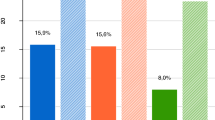Abstract
The objective of this paper is to analyze the impact of the factors that stimulate inspiration in the design process. An empirical study is proposed in this paper. Three factors were summarized, including knowledge, knowledge relations and innovative strategies. Representations of these three factors that were extracted from the international patent classification (IPC) were analyzed. An experimental scheme was designed, where 40 undergraduate students were selected as subjects and divided into five groups. One group was used as the control group with no materials provided, and the other four groups were used as the experimental subjects. The three factors and their combinations were provided to each of the four experimental groups. Subjects in each group were asked to propose preliminary designs of a coin-sorting device. The submitted designs were evaluated based on the novelty and practicality of the innovation. By comparing the groups, the impact of each factor on inspiration could be analyzed. The results show that the verb knowledge in the IPC has a significant impact on stimulating inspiration. For untrained students lacking experience, innovative strategies have a negative impact on the novelty of the inspiration. The knowledge relations can overcome the negative impact on the novelty induced by the innovative strategies.






Similar content being viewed by others
References
Baughman, A. W., & Mumford, M. D. (1995). Process-analytic models of creative capacities: Operations influencing the combination-and-reorganization process. Creativity Research Journal, 8(1), 37–62.
Chiu, I., & Shu, L. H. (2007). Using language as related stimuli for concept generation. Artificial Intelligence for Engineering Design, Analysis and Manufacturing: AIEDAM, 21(2), 103–121.
Dunbar, K. (1997). How scientists think: On-line creativity and conceptual change in science. In Conceptual structures and processes: Emergence, discovery, and change.
Finke, R. (1990). Creative imagery: Discoveries and inventions in visualization. Hillsdale, NJ: Erlbaum.
Gang, H., & Zhang, G. B. (2005). Secondary innovation on the basis of patent. Industrial Engineering and Management, 10(1), 115–118.
Gentner, D., & Markman, A. B. (2010). Structure map** in analogy and similarity. American Psychologist, 52(1), 45–56.
Goldschmidt, G., & Sever, A. L. (2011). Inspiring design ideas with texts. Design Studies, 32(2), 139–155.
Gonçalves, M., Cardoso, C., & Badke, S. P. (2014). What inspires designers? Preferences on inspirational approaches during idea generation. Design Studies, 35(1), 29–53.
Gould, R. V., & Fernandez, R. M. (1989). Structures of mediation: A formal approach to brokerage in transaction networks. Sociological Methodology, 19, 89–126.
Ji, Y., Qiu, Q. Y., Feng, P. E., et al. (2016). Extraction and utilization of design knowledge in international patent classification. Journal of Zhejiang University (Engineering Science), 50(3), 412–418.
Knoll, S, W., & Horton, G. (2015). The impact of analogical distance as a mental stimulus in ideation processes using change of perspective: Jum**. In Hawaii international conference on system sciences (pp. 226–235). IEEE.
Li, J. R. (2011). Patent information and its utilizing (2nd ed.). Peking: China Intellectual Property Press.
Li, W. W. (2015). The mechanism of key heuristic information detection in prototype elicitation paradigm (D). Chongqing: Southwest University.
Li, H. (2017). Method of extraction of inspiration knowledge in patent and product innovation based on memory structure (D). Hangzhou: Zhejiang University.
Mohammad, S., Hirst, G. (2006). Distributional measures of concept-distance: A task-oriented evaluation. In Conference on empirical methods in natural language processing (p. 35).
Qiu, Q. Y., Ji, Y., & Feng, P. E. (2016). Functional innovation strategies based on IPC knowledge community detection and reorganization. Chinese Journal of Mechanical Engineering, 52(23), 43–49.
Ren, G., Li, P., & Lu, Q. (2014). Reasearch on innovative computer-aided innovation systems based on depth knowledge. Journal of Mechanical Design, 31(2), 15–19.
Runco, M. A. (1999). Divergent thinking. In M. A. Runco & S. Pritzker (Eds.), Encyclopedia of creativity, Vol. 1. Ae-h (pp. 577–582). San Diego, CA: Academic Press.
Simon, H. A. (1978). Information-processing theory of human problem solving. In W. K. Estes (Ed.), Handbook of learning and cognitive processes (Vol. 5, pp. 271–295)., Human information processing Hillsdale, NJ: Lawrence Erlbaum.
SIPO. (2010). Guidelines for patent examination 2010. Bei**g: Intellectual Property Press.
Sun, G., Yao, S., & Carretero, J. A. (2014). Comparing cognitive efficiency of experienced and inexperienced designers in conceptual design processes. Journal of Cognitive Engineering & Decision Making, 8(4), 330–351.
Wang, Z. X. (2009). Research on method of patent knowledge acquisition and its supporting to conceptual innovation design (D). Hangzhou: Zhejiang University.
Wang, Z. X., Qiu, Q. Y., & Feng, P. E. (2008). Patent knowledge mining for conceptual design. Journal of Zhejiang University, 42(3), 522–527.
Wang, T. H., Wu, X., & Lan, W. S. (2016). Improved community detection algorithm based on local modularity. Journal of computer applications, 36(5), 1296–1301.
Wilson, J. O., Rosen, D., Nelson, B. A., et al. (2010). The effects of biological examples in idea generation. Design Studies, 31(2), 169–186.
WIPO. http://www.wipo.int/classifications/ipc/en/ITsupport/Version20110101/index.html.
Wu, Z. Z., Qiu, J., & Zhang, Q. L. (2008). Exploring the mechanism for prototype elicitation effect in insight. Psychological Development and Education, 24(1), 31–35.
Xue, C. (2013). Research on method of mechanical product innovative design based on patent knowledge (D). Hangzhou: Zhejiang University.
Zhang, H. (2010). Research on method of acquiring patent knowledge and aiding product innovation (D). Hangzhou: Zhejiang University.
Zhang, Q. L., Qiu, J., & Cao, G. K. (2004). A review and hypothesis about the cognitive mechanism of insight. Psycholgoical Science, 27(6), 1435–1437.
Zhu, X. Y. (2015). Research on the determinants of the effectiveness of innovation method training program (D). Bei**g: Tsinghua University.
Acknowledgements
This research is sponsored by National Natural Science Foundation of China (Grant No. 51075356).
Author information
Authors and Affiliations
Corresponding author
Ethics declarations
Conflict of interest
The authors declare that there is no conflict of interests regarding the publication of this paper.
Rights and permissions
About this article
Cite this article
Ji, Y., Qiu, Q., Feng, P. et al. Empirical study on the impact of knowledge in international patent classification on design inspiration of undergraduate students. Int J Technol Des Educ 29, 803–820 (2019). https://doi.org/10.1007/s10798-018-9457-0
Accepted:
Published:
Issue Date:
DOI: https://doi.org/10.1007/s10798-018-9457-0




